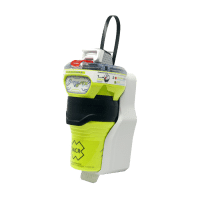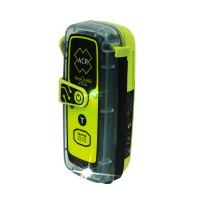EPIRBS and PLBs
As technology advances, so does our ability to stay safe and connected, even in the most remote locations. For those who venture into the great outdoors, whether on land or at sea, it’s crucial to invest in reliable safety equipment. Emergency Position Indicating Radio Beacons (EPIRBs) and Personal Locator Beacons (PLBs) are two such devices that have proven their worth time and time again. In this article, we’ll explore the features and benefits of EPIRBs and PLBs, as well as how they can be a lifesaving asset for adventurers.
(more...)EPIRBs: A Must-Have for Boaters
EPIRBs are specifically designed for use in maritime emergencies. When activated, they transmit a distress signal to the global Cospas-Sarsat satellite system, which then alerts local search and rescue teams to your location. Here are some of the key features of EPIRBs:
- Long-range transmission: EPIRBs have a long-range transmission capability, allowing them to send signals from virtually anywhere in the world.
- Waterproof and floatable: EPIRBs are designed to be waterproof and float on water, ensuring they remain functional even in the most challenging conditions.
- Automatic activation: Some EPIRB models automatically activate upon contact with water, ensuring that a distress signal is sent even if the user is incapacitated.
- Long battery life: EPIRBs typically have a battery life of 5-10 years, giving you peace of mind during your boating adventures.
PLBs: Portable Safety for Outdoor Enthusiasts
PLBs are smaller, more portable versions of EPIRBs designed for personal use. They can be used by hikers, climbers, skiers, and other outdoor enthusiasts who may find themselves in remote locations or emergency situations. Some of the key features of PLBs include:
- Compact and lightweight: PLBs are designed to be small enough to fit in a pocket or attach to your gear, making them easy to carry during outdoor activities.
- GPS integration: Many PLBs feature integrated GPS technology, enabling search and rescue teams to pinpoint your location more accurately.
- Versatile use: PLBs can be used on land, in the air, or at sea, making them suitable for a wide range of activities and environments.
- Extended battery life: Like EPIRBs, PLBs typically have a long battery life, ensuring they’ll be operational when you need them most.
Registration and Maintenance
It’s crucial to register your EPIRB or PLB with the appropriate national authority, as this will ensure that your personal information is linked to the device, enabling search and rescue teams to act more efficiently. Additionally, make sure to perform regular maintenance checks and replace the battery as needed to ensure your device remains in optimal working condition.
Difference between EPIRBS and PLBs
-
Intended use
EPIRBs: Primarily designed for maritime emergencies and used by boaters.
PLBs: Designed for personal use by outdoor enthusiasts on land, in the air, or at sea.
-
Size and portability
EPIRBs: Generally larger and less portable than PLBs.
PLBs: Compact and lightweight, making them easy to carry during various outdoor activities.
-
Activation
EPIRBs: Some models automatically activate upon contact with water.
PLBs: Require manual activation by the user.
-
Transmission range
EPIRBs: Long-range transmission, suitable for sending distress signals from anywhere in the world.
PLBs: May have a slightly shorter transmission range compared to EPIRBs, but still capable of reaching the global Cospas-Sarsat satellite system.
-
Mounting
EPIRBs: Typically mounted on a boat or vessel, sometimes in a bracket that releases the EPIRB when submerged.
PLBs: Can be attached to gear, clothing, or carried in a pocket.
Regulations and registration
EPIRBs: Often subject to specific maritime regulations and must be registered with the appropriate national authority.
PLBs: May have fewer regulations, but should still be registered with the relevant national authority for optimal efficiency in emergencies.
EPIRBS vs PLBs: Which One Should I Buy?
When deciding between an EPIRB and a PLB, it’s essential to consider your specific needs and the activities you’ll be engaging in. If you primarily spend time on boats or participate in water-based activities, an EPIRB is the ideal choice, as it is specifically designed for maritime emergencies and often features automatic activation upon contact with water. On the other hand, if you’re an outdoor enthusiast who enjoys hiking, climbing, skiing, or other land-based activities, a PLB would be more suitable due to its compact size, lightweight design, and versatility across various environments. In some cases, it may be beneficial to invest in both devices to cover a broader range of situations and ensure maximum safety for yourself and your loved ones. The key is to assess your individual requirements and choose the device that best meets those needs while providing the critical lifeline to search and rescue teams in emergencies.
EPIRBs and PLBs are indispensable safety devices for anyone venturing into remote areas, whether on land or at sea. These devices provide peace of mind, knowing that in an emergency, help can be quickly dispatched to your location. By investing in an EPIRB or PLB from a reputable supplier like Poco Marine, you’re taking an essential step toward ensuring the safety of yourself and your loved ones during your outdoor adventures.
Showing all 11 results
-

ACR GlobalFix V4 406 MHz EPIRB CAT I
$614.09 USD Add to cart -

ACR GlobalFix V5 AIS CAT II EPIRB with Return Link Service and Mobile App
$823.61 USD Add to cart -

ACR GlobalFix V6 EPIRB CAT I with Return Link Service and Mobile App
$856.13 USD Add to cart -

ACR GlobalFix V6 EPIRB CAT II with Return Link Service and Mobile App
$671.89 USD Add to cart -

ACR ResQLink 400 Personal Locator Beacon
$339.57 USD Add to cart -

ACR ResQLink View Buoyant Personal Locator Beacon with Digital Display
$397.34 USD Add to cart -

McMurdo Fastfind 220 Personal Locator Beacon
$288.96 USD Select options This product has multiple variants. The options may be chosen on the product page -

McMurdo Smartfind EPIRB G5 w/GPS CAT 2 Manual Release
$433.46 USD Add to cart -

Ocean Signal MOB1 RescueME AIS Man Overboard Device
$252.84 USD Add to cart -

Ocean Signal RescueME EPIRB1 Pro Category 1 Auto Deploy
$509.33 USD Add to cart -
Sale!

Ocean Signal RescueME PLB1 Personal Locator Beacon
Original price was: $296.19 USD.$274.51 USDCurrent price is: $274.51 USD. Add to cart


